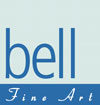Description
David Thomas was Head of Art at Peter Symonds Sixth Form College for 29 years. In 2012 he retired which has given him the time to pursue his passion as a landscape painter.
He works directly from nature en- plein air. Primarily he paints with oils because of the substantive feel to the body of the paint and the intensity of its colour. He values the subtle contrast of transparent and opaque colour and the workability of the medium.
David expresses his inner response and feelings for nature through landscape painting . He looks for connections and how one colour flows into another, forms engage and separate, how one point influences another.
He has a passion for working with light and the way it changes a scene throughout the day. The different shadows and patterns it makes and the way it can completely change colours from one moment to another depending on the time of day or the season.
The ever-changing character of the Hampshire landscape is a wonderful challenge for any painter. Every week David ventures out with canvas, easel and oils to respond to the possibilities of different locations.
His current focus is the 100 mile length of the South Downs Way. This is a walk between Winchester and Eastbourne. David has started to paint specific views at different times of the day through the changing seasons. The results are an on-going visual diary of experience.
Art history plays an important role and is an inspiration in his work – notably the landscapes of Constable and Turner.
David said, “I am always conscious as I work, of Cezanne’s structural lessons and his notion that ‘painting from nature is not copying the object, but realizing ones own sensations’”.
